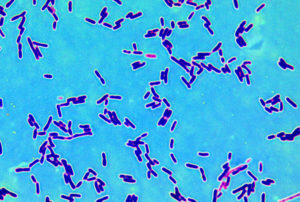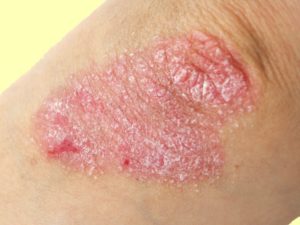 A study was just published by researchers at the University of California that reviewed the role of Lactobacillus bacteria in a variety of diseases and conditions. What was surprising was that while we generally think of Lactobacillus bacteria as beneficial, some studies suggest that in certain diseases or conditions they may not be. But it is unknown if in those cases whether they're causing harm or why they are there in increased amounts.
A study was just published by researchers at the University of California that reviewed the role of Lactobacillus bacteria in a variety of diseases and conditions. What was surprising was that while we generally think of Lactobacillus bacteria as beneficial, some studies suggest that in certain diseases or conditions they may not be. But it is unknown if in those cases whether they're causing harm or why they are there in increased amounts.
Studies have found that Lactobacillus numbers are decreased ("depleted") in: some infectious diseases such as human immunodeficiency virus (HIV), in diarrhea-dominant irritable bowel syndrome (IBS) patients, type 1 diabetes, multiple sclerosis, colorectal cancer, and maternal prenatal stress (resulted in the infant having decreased levels of Lactobacillus bacteria). Lactobacillus levels were found to be either increased or decreased (depending on the study) in: cancer [but breast cancer, head and neck squamous cell cancer had increases in Lactobacillus levels], type 2 diabetes, and obesity. Increased amounts (intestinal "abundance") of Lactobacillus species has been found in: Crohn’s disease (CD) patients and rheumatoid arthritis (RA) patients. Studies also found benefits for consuming probiotics (with varying strains of Lactobacillus) for treating most of these diseases and conditions.
It used to be thought that Lactobacillus species were main species of the gut, but as genetic sequencing tests were developed, it became clear that Lactobacillus species are less than 1% of the bacterial species of the gut - thus a "minor member" of the gut microbiome. But as can be seen in the review study - much is still unknown about Lactobacillus species. What is true for one Lactobacillus species may not apply to another one. Studies find that feeding or nourishing beneficial microbes in the gut is good (e.g., eat foods with lots of fiber), as well as eating foods with lots of naturally occurring microbes (e.g., raw fruits and vegetables, cheeses, and fermented foods).
NOTE: In the following excerpts autochthonous = native (to the gut), and allochthonous - not native (originates elsewhere - such as from ingested probiotics). Excerpts from Current Opinion in Biotechnology:
Intestinal Lactobacillus in health and disease, a driver or just along for the ride?
Similarly, a number of recent publications in which culture independent methods were employed (e.g. 16S rRNA gene amplicon sequencing) identified Lactobacillus as being significantly enriched in the distal gut during either health or disease.....Lactobacillus species have been isolated from the entirety of the human GI tract (oral cavity to feces) as well as the skin and vagina. This genus is estimated to constitute 6% of the total bacterial cell numbers in the human duodenum and approximately 0.3% of all bacteria in the colon..... Lactobacillus can also dominate the human vaginal microbiota (90 to 100% of total bacteria present) and is found on the skin, but in much lower relative abundance.
Only a few out of the >200 known Lactobacillus species have been consistently and repeatedly associated with the human GI tract. Recently, this number was increased to over 50 Lactobacillus species that were repeatedly detected in the stools of healthy volunteers. The most abundant Lactobacilli included L. casei, L. delbruckeii, L.murinus, L. plantarum, L.rhamnosus, and L. ruminus. Some of these species (e.g. L. rhamnosus and L. murinus) are rarely isolated from environments outside the intestine and are considered gut-autochthonous microorganisms. Other mucosal sites are colonized by distinct species (e.g. L. crispatus in the vagina).
Both human immunodeficiency virus (HIV)-infected humans and simian immunodeficiency virus (SIV)- infected rhesus macaques harbor reduced numbers of intestinal Lactobacillus..... Several recent animal studies have indicated a broader role for Lactobacillus in prevention and resolution of infectious disease. Tryptophan metabolites (indole aldehydes) produced by indigenous L. reuteri strains activate host aryl hydrocarbon receptors (AHR) to promote gut and vaginal epithelial barrier and antimicrobial responses required for limiting the expansion of Candida albicans, an opportunistic pathogen. Autochthonous Lactobacillus might also have a role in the resolution of infectious disease and recovery of immune homeostasis.
A meta-analysis of reports investigating the fecal microbiomes from IBS patients and healthy subjects concluded Lactobacillus was depleted in diarrhea-dominant, IBS patients..... Consistent with these results, meta-analysis of probiotic intervention studies randomized controlled trials (RCTs)) for treatment of IBS concluded that multi-species probiotics diminish symptoms (abdominal pain, bloating, and flatulence scores). Conversely, intestinal abundance of Lactobacillus and other genera including Bifidobacterium were recently positively correlated with Crohn’s disease (CD)patients .... These findings contrast with ulcerative colitis (UC) in which probiotic Lactobacillus consumption has been with improved clinical symptoms.
The intestinal microbiota of patients with severe and early onset rheumatoid arthritis (RA) were shown to have increased proportions of L. salivarius, L. ruminus, and L. iners when compared to healthy, age-matched individuals..... These results are in opposition to recent RCTs of probiotics in RA patients.... Such findings might indicate species or strain-specific differences between autochthonous and allochthonous Lactobacillus on RA disease activity.
There are conflicting reports on the association of intestinal Lactobacillus with obesity in humans..... Moreover, metaanalysis of RCT studies found that probiotic Lactobacillus improved weight management outcomes in obese adults. Consumption of yogurt and other dairy products fermented by Lactobacillus is also correlated with protection from T2D and obesity. Because Lactobacillus species appear to be either associated with weight gain or weight loss, the disparate findings among obese individuals might be due to genetic differences among the lactobacilli. Strain and species distinctions could result in variations in carbohydrate metabolism and production of fermentation end-products, such as lactate.
In a systematic review of thirty-one studies, Lactobacillus along with a limited number of butyrogenic genera were consistently diminished in colorectal cancer patients. Preventative and therapeutic roles of Lactobacillus in cancer are supported in studies with preclinical, rodent models, including a recently study in which a multi-strain probiotic altered Th-cell polarization away from Th17 cells in a mouse model of hepatocellular carcinoma. However, Lactobacillus might not always be beneficial in certain extra-intestinal sites as shown by the higher levels of Lactobacillus in malignant breast cancer compared to benign-disease tissues. There was also a positive association between the levels of this genus in the oral microbiome and head and neck squamous cell carcinoma.

 Thunderstorm asthma
Thunderstorm asthma It seems like I can't stop writing about coffee (
It seems like I can't stop writing about coffee ( Two recent studies, both done in California, looked at different aspects of
Two recent studies, both done in California, looked at different aspects of 
 Psoriasis. Credit: Medscape
Psoriasis. Credit: Medscape Surprised...is how I felt after reading this study. According to
Surprised...is how I felt after reading this study. According to  Again, another study finds that taking supplements is not always best for health. Many studies find that eating foods with vitamin "X" is beneficial, but taking high dose supplements may be linked to health problems (
Again, another study finds that taking supplements is not always best for health. Many studies find that eating foods with vitamin "X" is beneficial, but taking high dose supplements may be linked to health problems ( Could something as simple as giving a probiotic and a sugar for 7 days prevent sepsis in babies? Sepsis is a life-threatening infection that is a HUGE problem in developing countries such as India. It is a major cause of death in babies throughout the world, even with antibiotic treatment. So this new research (done in India) finding that giving newborn babies a probiotic plus the sugar fructooligosaccharide (FOS) for only one week had the result of lowering the incidence of sepsis and death by 40%, and also infections is huge news. A game changer.
Could something as simple as giving a probiotic and a sugar for 7 days prevent sepsis in babies? Sepsis is a life-threatening infection that is a HUGE problem in developing countries such as India. It is a major cause of death in babies throughout the world, even with antibiotic treatment. So this new research (done in India) finding that giving newborn babies a probiotic plus the sugar fructooligosaccharide (FOS) for only one week had the result of lowering the incidence of sepsis and death by 40%, and also infections is huge news. A game changer. Amazing if this holds up in larger studies - a treatment for peanut allergy! As the
Amazing if this holds up in larger studies - a treatment for peanut allergy! As the  Is "fat but fit" a myth or true? The results of this study suggest that it is a myth. That there is a higher risk of coronary heart disease, and even if everything looks OK initially, it is associated with an eventual metabolic changes (and problems). Just wait a while - as can be seen in the results of
Is "fat but fit" a myth or true? The results of this study suggest that it is a myth. That there is a higher risk of coronary heart disease, and even if everything looks OK initially, it is associated with an eventual metabolic changes (and problems). Just wait a while - as can be seen in the results of